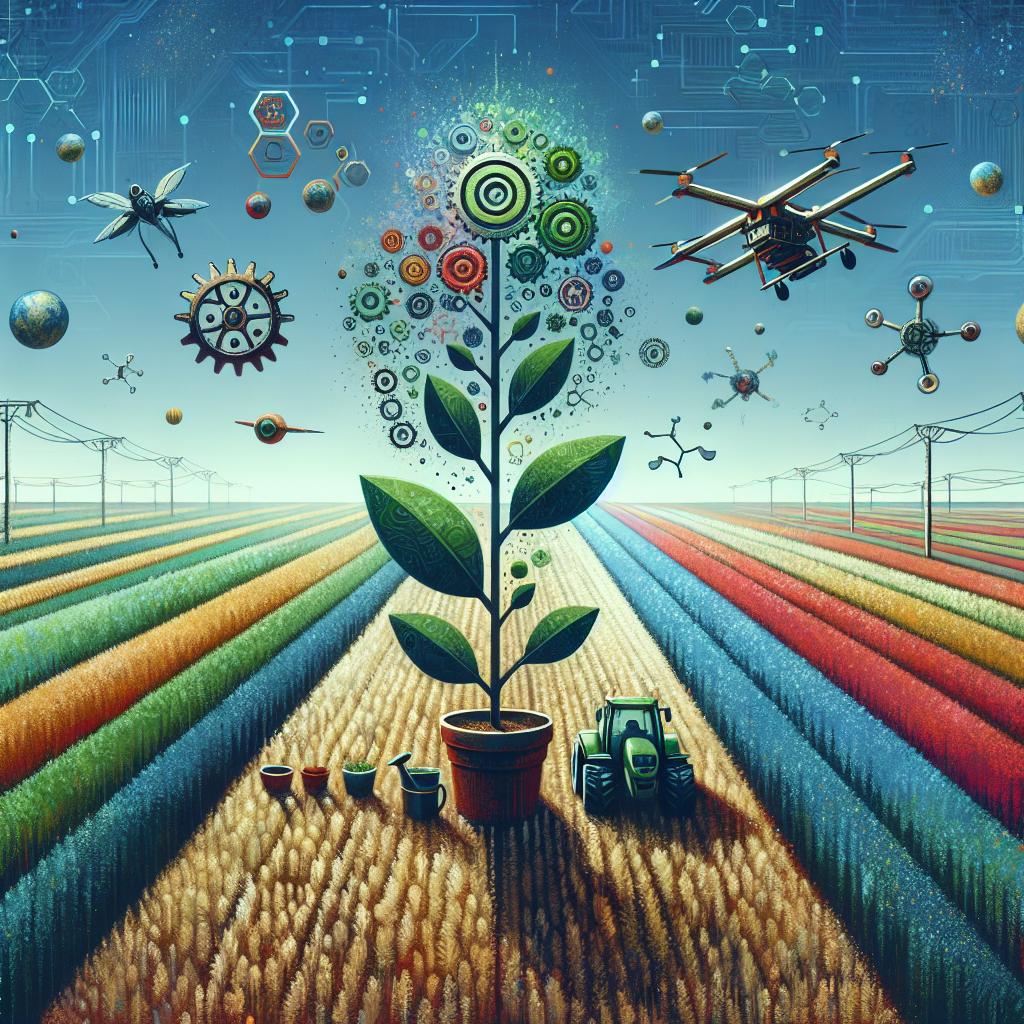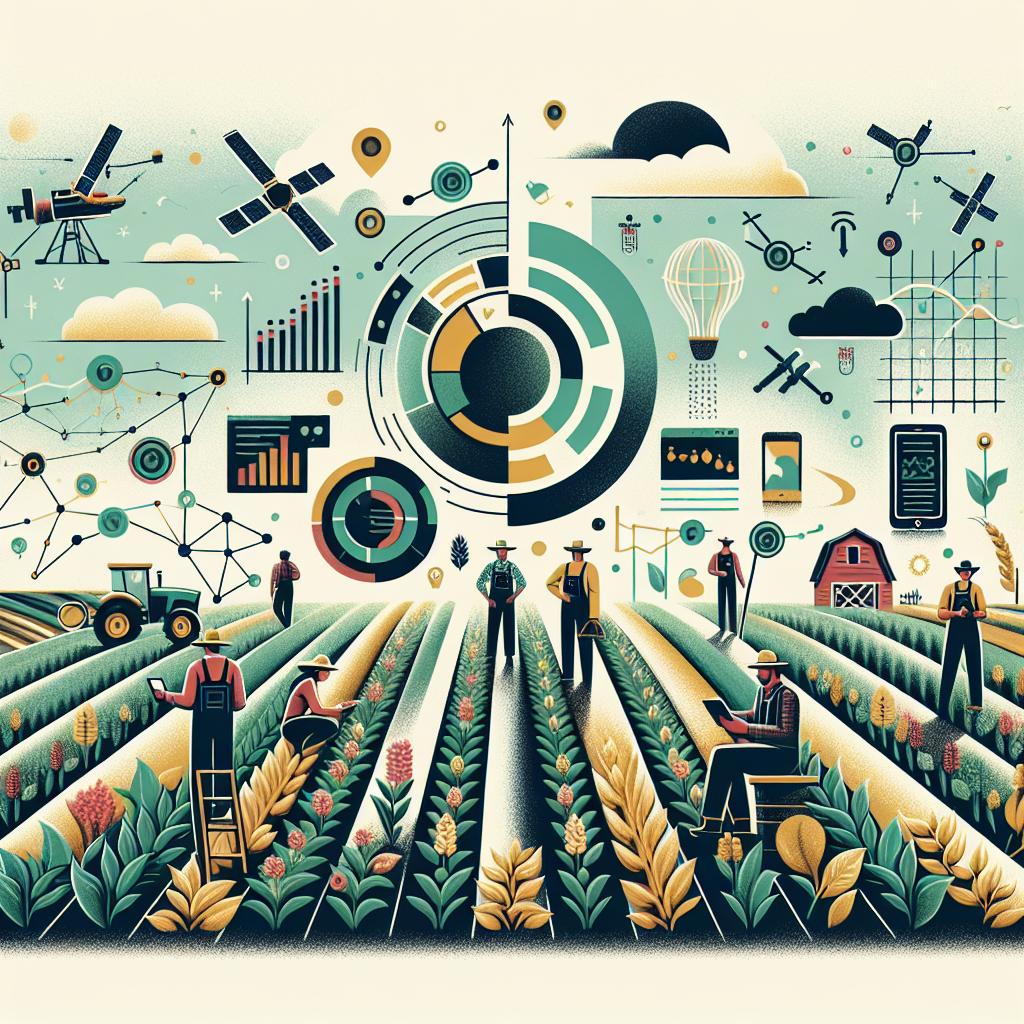This post may contain affiliate links which means I may receive a commission for purchases made through links. Learn more on my Private Policy page.
innovative Approaches to Irrigation System Automation: Revolutionizing the Way We Water
In the world of agriculture,water is life—an essential resource that can mean the difference between thriving crops and parched fields. Yet, as climate change continues to challenge customary farming practices and the global population grows, the question lingers: How can we ensure that our precious water resources are used wisely and efficiently? Enter the era of automation! in this pleasant exploration, we’ll delve into the exciting realm of innovative approaches to irrigation system automation. From smart sensors that communicate with weather forecasts to drones that oversee vast fields, technology is transforming the way we nurture our crops. So grab your favorite beverage, settle in, and join us as we uncover how these groundbreaking systems are not just watering plants but also sowing the seeds of a sustainable future!
Harnessing Smart Technologies for Precision water Management
As the global demand for water intensifies, the integration of smart technologies into irrigation systems presents a vital solution for sustainable agriculture. By leveraging IoT devices, drones, and data analytics, farmers can now monitor soil moisture levels, weather patterns, and crop health in real-time, enabling precise irrigation that conserves water and enhances yield.The seamless connectivity of these technologies allows for automated systems that can adjust watering schedules based on actual needs rather than fixed routines, substantially reducing water waste.
Moreover, implementing smart technologies in irrigation management empowers farmers with valuable insights and predictive capabilities. Consider the benefits of a fully connected irrigation system:
- Real-time Monitoring: Sensors provide continuous data, optimizing water usage.
- remote Control: Users can operate systems from their smartphones, enhancing convenience.
- Data-Driven Decisions: Analytics tools offer actionable insights to improve crop health.
Additionally, adopting these smart solutions can lead to:
| Benefit | Description |
|---|---|
| Cost Efficiency | Reduces water bills and improves resource allocation. |
| Sustainability | Minimizes environmental footprints through efficient practices. |
| Increased Yields | Enhances crop growth by delivering precise water amounts. |

Embracing Sustainable Solutions through IoT Integration
The integration of the Internet of Things (IoT) in irrigation systems marks a pivotal leap towards greener agricultural practices. By leveraging real-time data and smart sensors, farmers can now monitor soil moisture levels, weather conditions, and crop health effortlessly. This innovative approach not only optimizes water usage, leading to ample conservation efforts, but also enhances crop yield and quality. With IoT-enabled devices, the benefits are manifold:
- Reduced Water Waste: Automated watering schedules prevent over-irrigation.
- Data-Driven Decisions: Real-time analytics guide farmers in making informed choices.
- Environmental Impact: Sustainable practices help in preserving ecosystems.
Moreover, smart irrigation systems provide predictive analytics that assist in anticipating future watering needs based on ongoing climatic changes. By connecting devices, farmers can implement solutions that not only cater to current demands but also adapt to long-term ecological shifts. A simplified table illustrating this integration’s impact further exemplifies it’s importance:
| Feature | Traditional Irrigation | IoT-Enhanced Irrigation |
|---|---|---|
| Water usage | High | Optimized |
| Crop Monitoring | Manual | Automated |
| Data Collection | Limited | Complete |
This seamless blend of technology and agriculture not only paves the way for increased efficiency but also champions a sustainable future, where every drop of water is utilized to its fullest potential.

Tailoring Automation Systems to Diverse Agricultural Needs
In the realm of modern agriculture, tailoring automation systems to meet specific needs is pivotal for maximizing efficiency and productivity. Each farm presents unique challenges, influenced by factors like climate, soil type, and crop diversity. Therefore, a one-size-fits-all approach to irrigation automation falls short. Rather, leveraging smart sensors and data analytics enables farmers to design systems that are not only responsive but also predictive. For instance, utilizing soil moisture sensors can provide real-time data helping to determine the right amount of water required at any given moment, thus optimizing water usage and enhancing crop health.
Furthermore, integrating renewable energy sources with automated irrigation can significantly reduce operational costs while promoting sustainability. Farmers can explore options such as solar-powered pumps that can be controlled via smartphone apps, allowing for adjustments based on weather forecasts and plant water needs. The benefits of this tailored approach extend beyond just cost savings; they contribute to long-term soil health and resource preservation. Here’s a brief overview of some innovative technological components that can be integrated into irrigation systems:
| Technology | Benefit |
|---|---|
| Smart Sensors | Real-time monitoring of soil conditions |
| AI algorithms | Predictive irrigation scheduling |
| Mobile Apps | Remote system management |
| Data Analytics | Enhanced decision-making for crop management |

Empowering Farmers with Data-Driven Decision Making
Imagine a world where farmers can make precise irrigation decisions based on real-time data, significantly enhancing their crop yields and optimizing water usage. By harnessing the power of IoT sensors and data analytics, agricultural practitioners can access valuable insights into soil moisture levels, weather patterns, and crop health. This wealth of data enables them to fine-tune their irrigation systems, ensuring that water is applied only when and where it is needed most. With data-driven approaches, farmers not only conserve precious resources but also contribute to sustainable farming practices that benefit the surroundings.
Moreover, integrating automation into irrigation systems reduces the labor burden on farmers, allowing them to focus on higher-level farming strategies. Key benefits include:
- Enhanced efficiency: Automated systems can schedule irrigation based on real-time data, saving both time and effort.
- Cost savings: With precise water request, farmers can reduce water bills and energize their budgets for other critical needs.
- Improved crop health: Timely and adequate watering leads to healthier crops, resulting in better yields at harvest time.
To illustrate the positive impact of automation, here’s a simple comparison of traditional versus automated irrigation approaches:
| Feature | traditional Irrigation | Automated Irrigation |
|---|---|---|
| Water Usage | High | Optimized |
| labor intensity | High | Low |
| Yield Consistency | Variable | high |
Concluding Remarks
As we conclude our exploration of innovative approaches to irrigation system automation, it’s clear that the future of agriculture is not just about what we grow, but how we grow it. By harnessing the power of technology, we’re ushering in a new era where water conservation and efficiency go hand in hand with productivity and sustainability.
Whether you’re a seasoned farmer looking to modernize your practices, an urban gardener seeking smart solutions, or just a curious mind eager to learn, the possibilities are endless. Embracing these advancements can pave the way for healthier crops, flourishing ecosystems, and a more sustainable planet for generations to come.
So, let’s keep the conversation going! Share your thoughts, experiences, and ideas on irrigation automation with your community. Together,we can cultivate a greener,smarter future—one drop at a time. Happy watering!
This post may contain affiliate links which means I may receive a commission for purchases made through links. Learn more on my Private Policy page.

